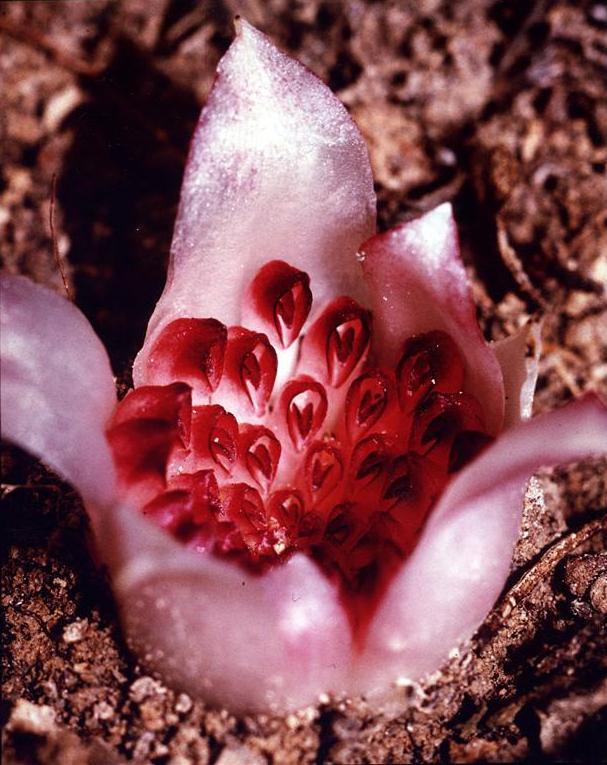Meet Rhizanthella gardneri. This strange little orchid is endemic to Western Australia and it lives, blooms, and sets seed entirely underground. It is extremely rare, with only 6 known populations. Fewer than 50 mature plants are known to exist. This is another one of those tricky orchids that does not photosynthesize but, instead, parasitizes a fungus that is mycorrhizal with the broom honey myrtle (Melaleuca uncinata).

"File:Rhizanthella gardneri — Fred Hort.jpg" by Jean and Fred Hart is marked with CC BY-SA 2.0.
The number of mature individuals was estimated to be fewer than 250 and threatened with continuing decline due to several threats, especially habitat loss and degradation.
Prevent habitat disturbance due to development activities, road, track and firebreak maintenance, earthworks, or other activities leading to habitat loss or disruption, or having other negative impacts on the Western underground orchid and associated Melaleuca and mycorrhiza species.
The Western underground orchid is a small, succulent, tuberous, perennial herb. The plants have a horizontal, thickened, branching rhizome 6 to 12 cm below ground level (Rogers 1928, DEC 2010). The pink-purple flowers are approximately 6 mm long and 5 mm wide, erect and solitary and produced on an underground capitulum. This species is almost completely subterranean except occasionally the ends of the bracts of the capitulum can emerge from the soil (Spooner 2003). The Western underground orchid is leafless and lacks chlorophyll (DEC 2010).